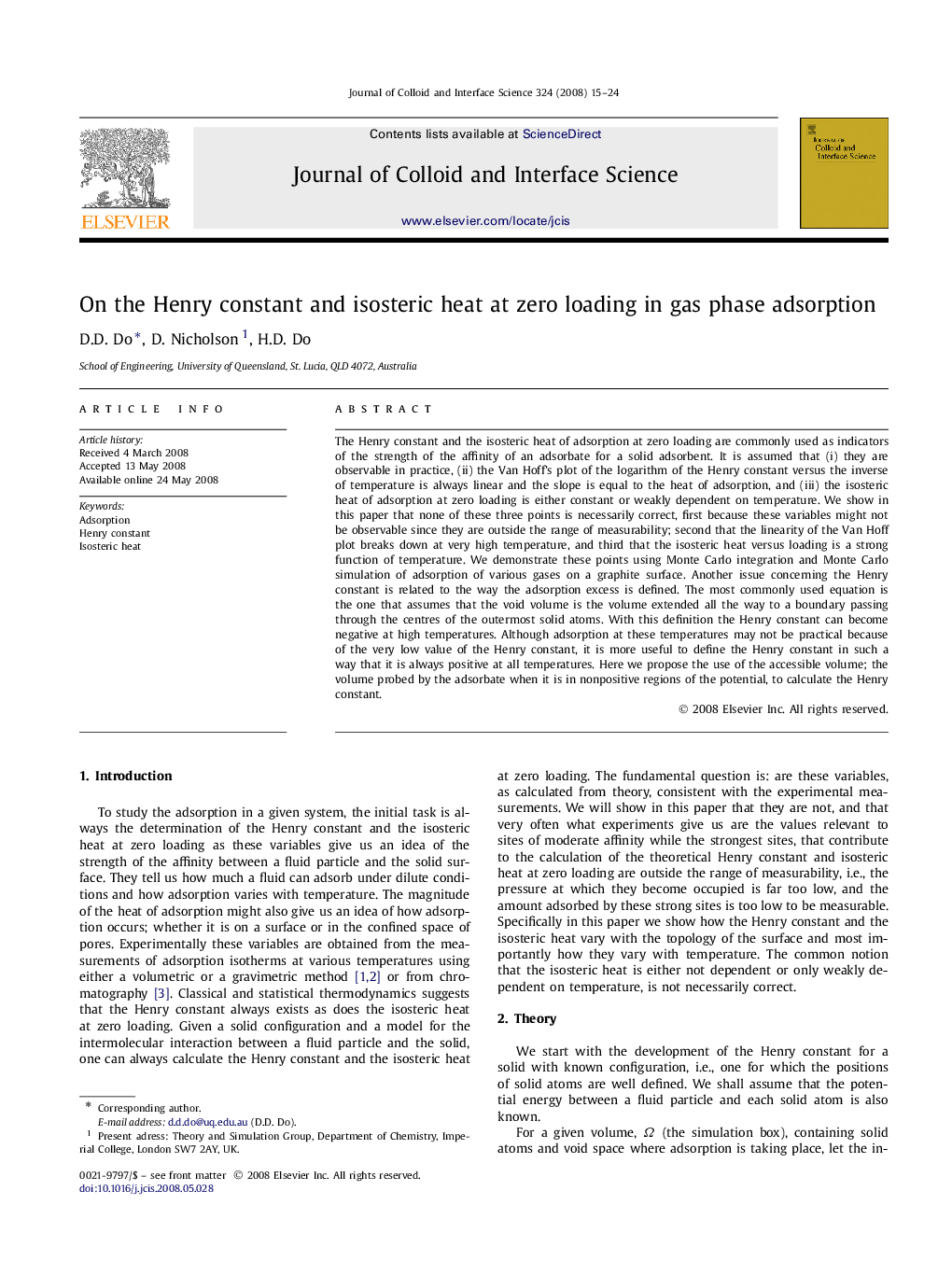| Article ID | Journal | Published Year | Pages | File Type |
|---|---|---|---|---|
| 611081 | Journal of Colloid and Interface Science | 2008 | 10 Pages |
The Henry constant and the isosteric heat of adsorption at zero loading are commonly used as indicators of the strength of the affinity of an adsorbate for a solid adsorbent. It is assumed that (i) they are observable in practice, (ii) the Van Hoff's plot of the logarithm of the Henry constant versus the inverse of temperature is always linear and the slope is equal to the heat of adsorption, and (iii) the isosteric heat of adsorption at zero loading is either constant or weakly dependent on temperature. We show in this paper that none of these three points is necessarily correct, first because these variables might not be observable since they are outside the range of measurability; second that the linearity of the Van Hoff plot breaks down at very high temperature, and third that the isosteric heat versus loading is a strong function of temperature. We demonstrate these points using Monte Carlo integration and Monte Carlo simulation of adsorption of various gases on a graphite surface. Another issue concerning the Henry constant is related to the way the adsorption excess is defined. The most commonly used equation is the one that assumes that the void volume is the volume extended all the way to a boundary passing through the centres of the outermost solid atoms. With this definition the Henry constant can become negative at high temperatures. Although adsorption at these temperatures may not be practical because of the very low value of the Henry constant, it is more useful to define the Henry constant in such a way that it is always positive at all temperatures. Here we propose the use of the accessible volume; the volume probed by the adsorbate when it is in nonpositive regions of the potential, to calculate the Henry constant.
Graphical abstractBehaviour of isosteric heat at zero loading as a function of temperature for adsorption of argon on graphite and defective surfaces.Figure optionsDownload full-size imageDownload as PowerPoint slide
